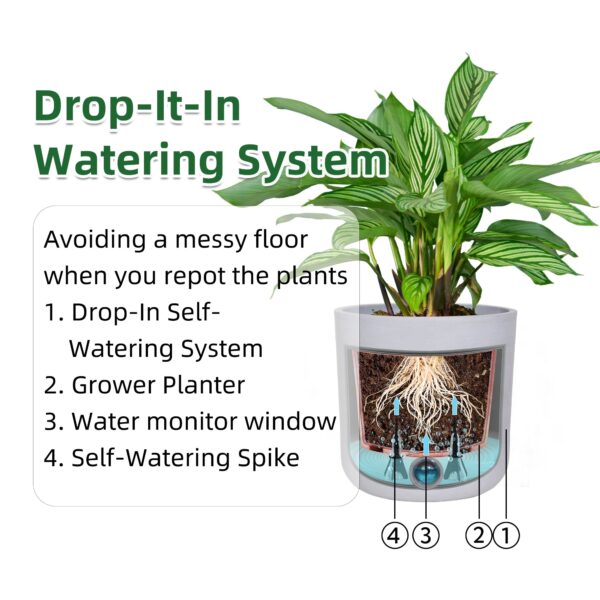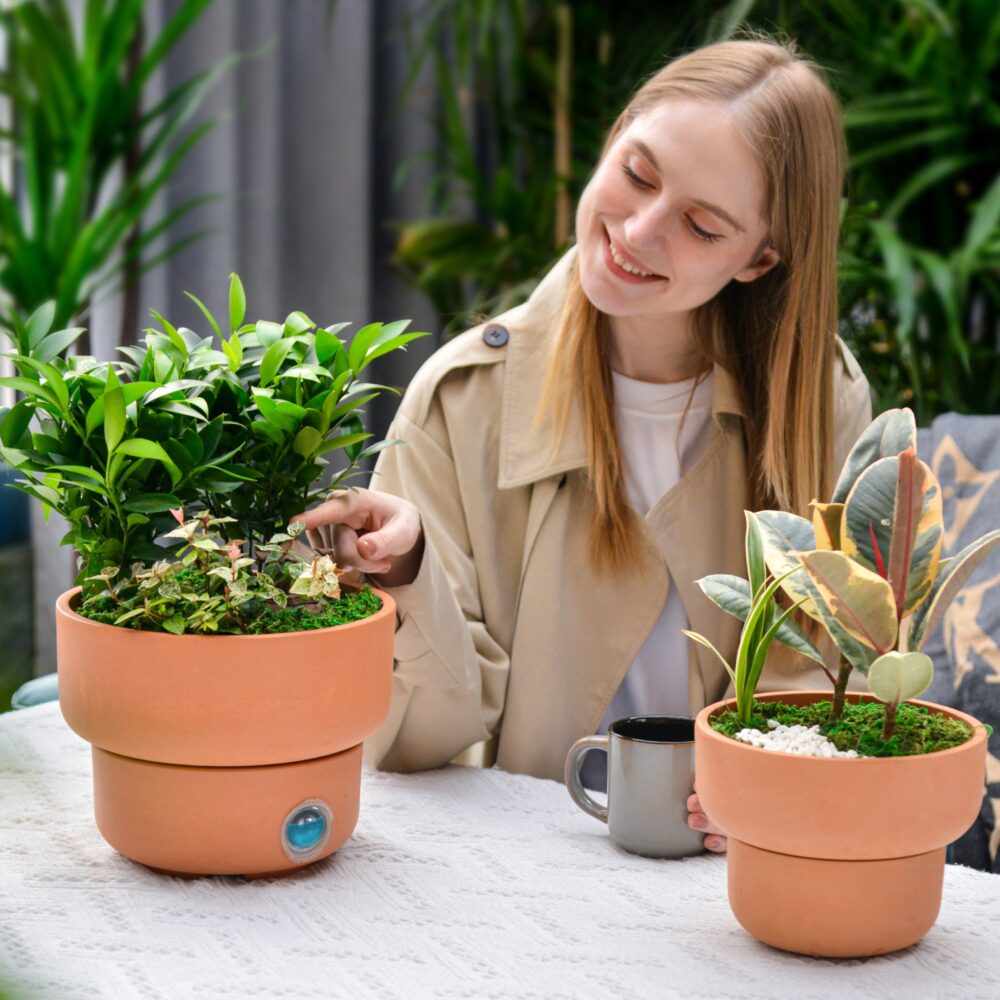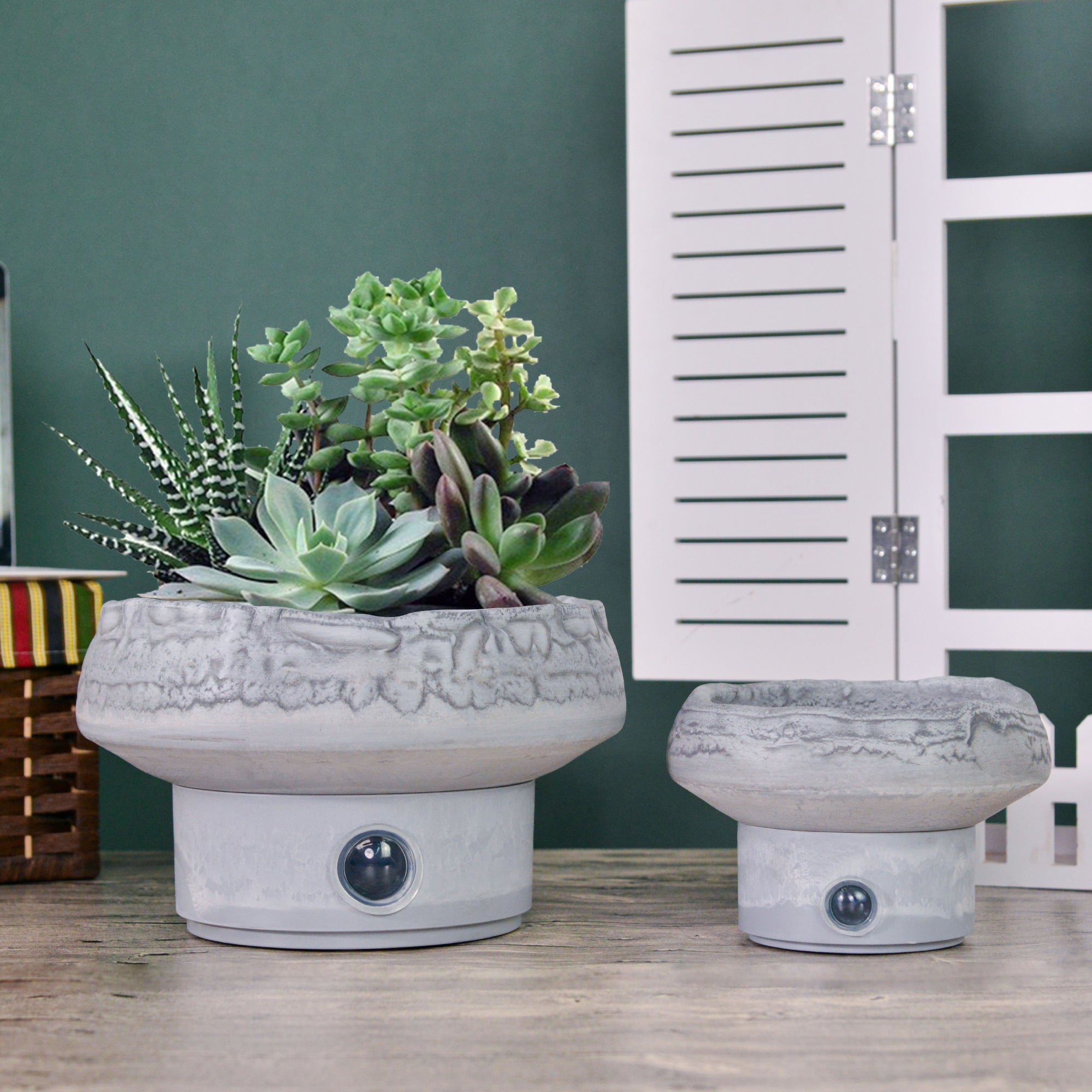What Are Self-Watering Planters?
Self-watering planters are innovative containers designed to provide plants with a consistent and gradual water supply. They are a convenient solution for plant enthusiasts who want to reduce the frequency of watering while promoting healthy plant growth.
How Do Self-Watering Planters Work?
Self-watering planters feature a unique design that ensures plants can access water as needed:
- Built-In Reservoir
- A water reservoir is located at the bottom of the planter, storing water for the plant to use over time.
- Wicking System
- A wick, often made of fabric or other porous material, draws water from the reservoir to the soil, maintaining consistent moisture.
- Soil and Roots
- The plant’s roots absorb water directly from the soil as needed, ensuring they receive an even and adequate water supply.

Key Features of Self-Watering Planters
- Reduced Watering Frequency
- The reservoir system means you water less often, making plant care more convenient.
- Consistent Moisture Levels
- The wicking system provides steady moisture, reducing the stress caused by fluctuating wet and dry periods.
- Prevention of Overwatering
- By separating the water reservoir from the soil, self-watering planters help prevent waterlogged soil and root rot.
Types of Self-Watering Planters
- Reservoir with Wick
- The most common design, featuring a built-in reservoir and wick to transfer water to the soil.
- Sub-Irrigation Systems
- Water is added to a tray or reservoir beneath the planter, allowing roots to draw moisture through the drainage holes.
- Hydroponic Systems
- A specialized type of self-watering planter that uses nutrient-rich water to nourish plant roots directly.

Benefits of Self-Watering Planters
- Convenience
- Perfect for people with busy schedules or those who travel frequently, as these planters require less frequent watering.
- Healthier Plants
- The consistent moisture supply supports healthier root systems and reduces plant stress.
- Water Conservation
- Self-watering planters minimize water waste by reducing runoff and evaporation.

Important Considerations
- Plant Selection
- Not all plants thrive in consistently moist soil. Self-watering planters are ideal for plants that prefer steady moisture, such as tropical plants, herbs, and certain vegetables. Drought-tolerant plants like succulents and cacti are less suited to this setup.
- Regular Maintenance
- To prevent algae, bacteria, or salt buildup, the reservoir and wick should be cleaned periodically.
- Monitoring Soil Moisture
- Although self-watering planters reduce watering frequency, it’s essential to occasionally check the soil moisture and refill the reservoir when needed.
Self-Watering Plant Pot Set of 2, Round Planter for Indoor Plants with Self Wicking Stand, Modern Decorative Flower Pots
By greenship-seo|2025-04-10T08:35:28+00:00January 6, 2025|Categories: HomeOasis Self-Watering System|Tags: Decorative Flower Pots, Self-Watering Pots|
18C
By greenship|2024-03-26T01:15:55+00:00March 25, 2024|Categories: HomeOasis Self-Watering System|
Self Watering Planters, 6 8 12 inches Set of 3 Planter, Modern Decorative Flower Pots for Indoor Plants with Self Wicking Stand
By greenship-seo|2025-04-10T08:34:57+00:00January 6, 2025|Categories: HomeOasis Self-Watering System|Tags: Decorative Flower Pots, Self-Watering Pots|



